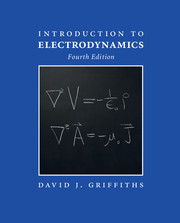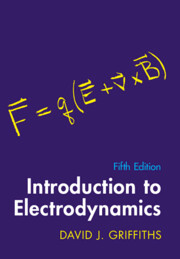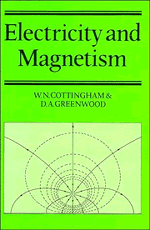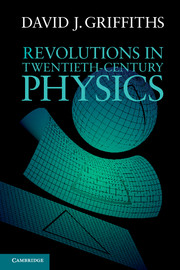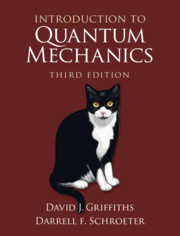Introduction to Electrodynamics
This well-known undergraduate electrodynamics textbook is now available in a more affordable printing from Cambridge University Press. The Fourth Edition provides a rigorous, yet clear and accessible treatment of the fundamentals of electromagnetic theory and offers a sound platform for explorations of related applications (AC circuits, antennas, transmission lines, plasmas, optics and more). Written keeping in mind the conceptual hurdles typically faced by undergraduate students, this textbook illustrates the theoretical steps with well-chosen examples and careful illustrations. It balances text and equations, allowing the physics to shine through without compromising the rigour of the math, and includes numerous problems, varying from straightforward to elaborate, so that students can be assigned some problems to build their confidence and others to stretch their minds. A Solutions Manual is available to instructors teaching from the book; access can be requested from the resources section at www.cambridge.org/electrodynamics.
- A time-tested textbook, which has dominated the undergraduate market for the last thirty-five years, reflecting the author's broad experience and love for the subject
- Breaks complex material down into comprehensible pieces that are accompanied by examples and historical context
- Presents the concepts in a straightforward but lively manner, making this book useful to a variety of teaching styles and philosophies
Reviews & endorsements
'Griffiths's book has come to dominate the American market in junior/senior E&M/electrodynamics textbooks to an extent that I have never seen any other textbook dominate any other undergraduate market - Griffiths's love of electrodynamics shines from every page … Not merely clear and effective - it is joyful.' Dan Styer, Oberlin College, Ohio
'… an ideal textbook for an intermediate Electrodynamics course for undergraduate students of Physics.' David Miller, University of Chicago
'… an excellent book, very well organized and readable. The students loved it … It is a time-tested and highly optimized book.' Steve Hagen, University of Florida
'Griffiths's classic undergraduate textbook on Electromagnetism has dominated the teaching of the subject at the advanced undergraduate level.' Shyam Erramilli, Boston University
'… an excellent book about this classical topic … written with Griffiths's customary clarity and in his very engaging style, so that, students tell me, it is a real pleasure to study from …' Eric Laenen, University of Amsterdam
Product details
August 2017Adobe eBook Reader
9781108359382
0 pages
453 b/w illus. 11 tables
This ISBN is for an eBook version which is distributed on our behalf by a third party.
Table of Contents
- 1. Vector analysis
- 2. Electrostatics
- 3. Potentials
- 4. Electric fields in matter
- 5. Magnetostatics
- 6. Magnetic fields in matter
- 7. Electrodynamics
- 8. Conservation laws
- 9. Electromagnetic waves
- 10. Potentials and fields
- 11. Radiation
- 12. Electrodynamics and relativity
- Appendix A. Vector calculus in curvilinear coordinates
- Appendix B. The Helmholtz theorem
- Appendix C. Units
- Index.

